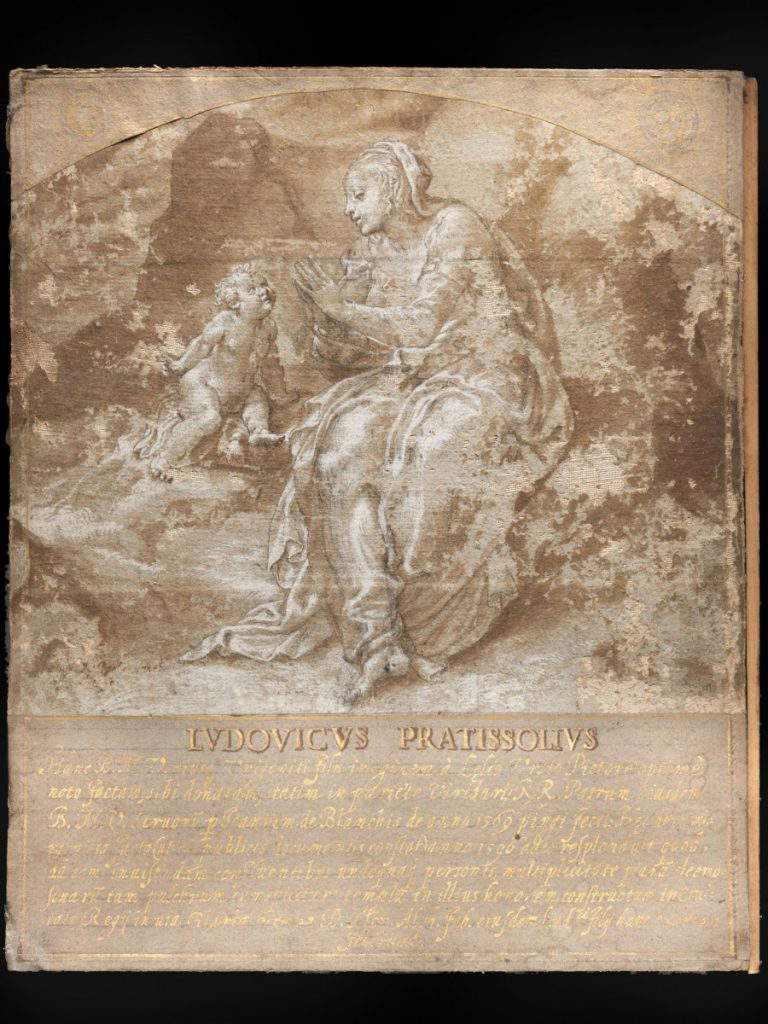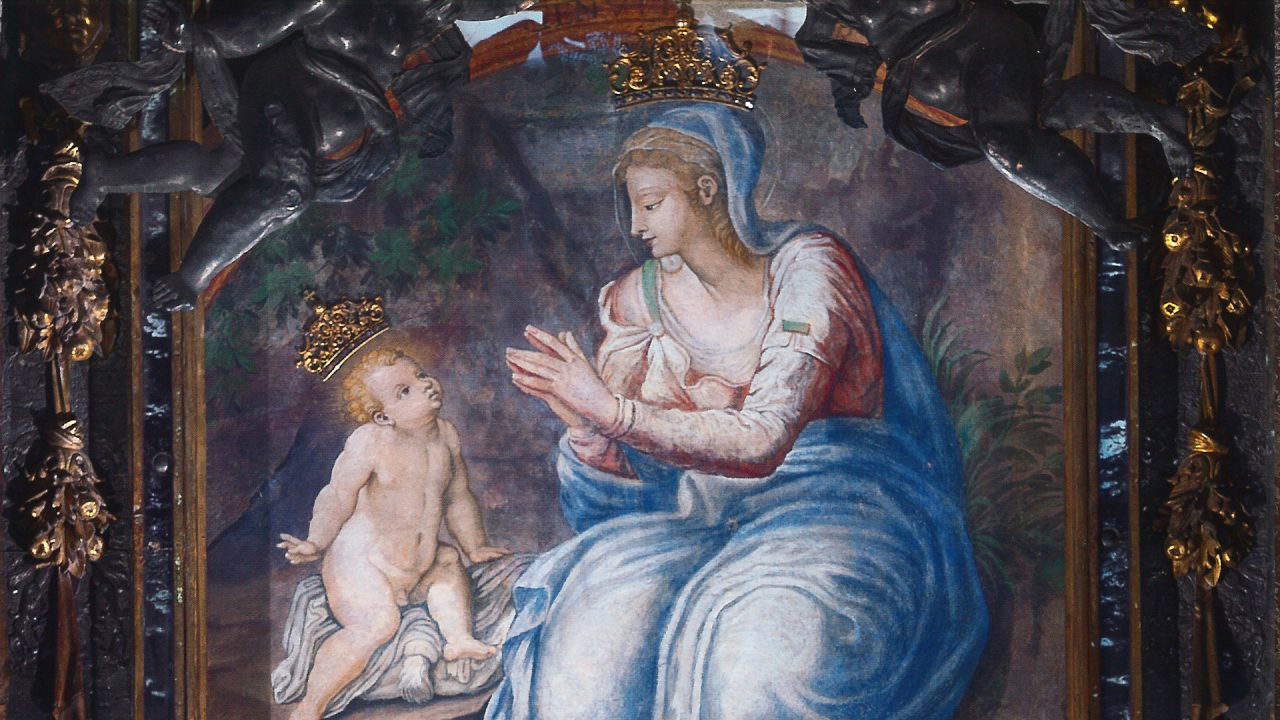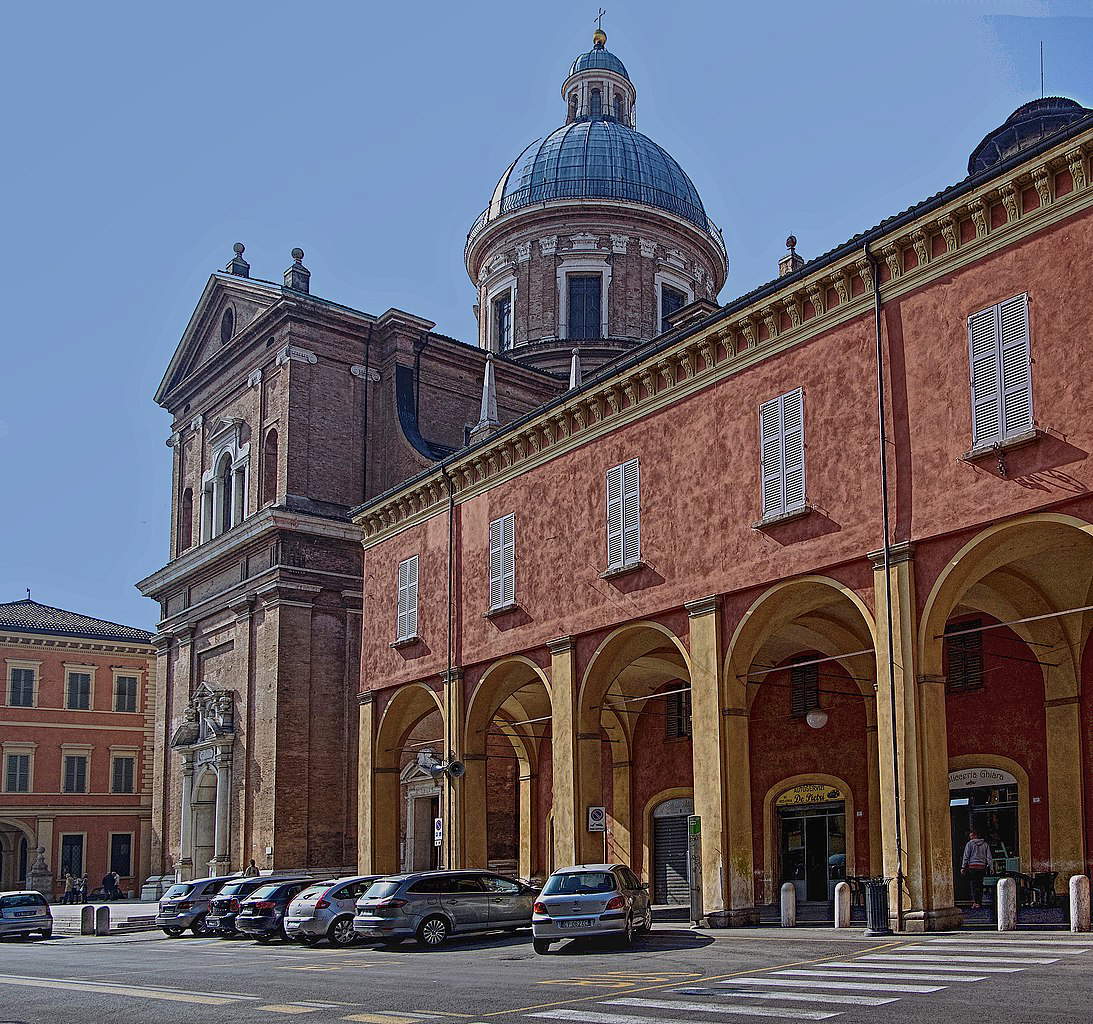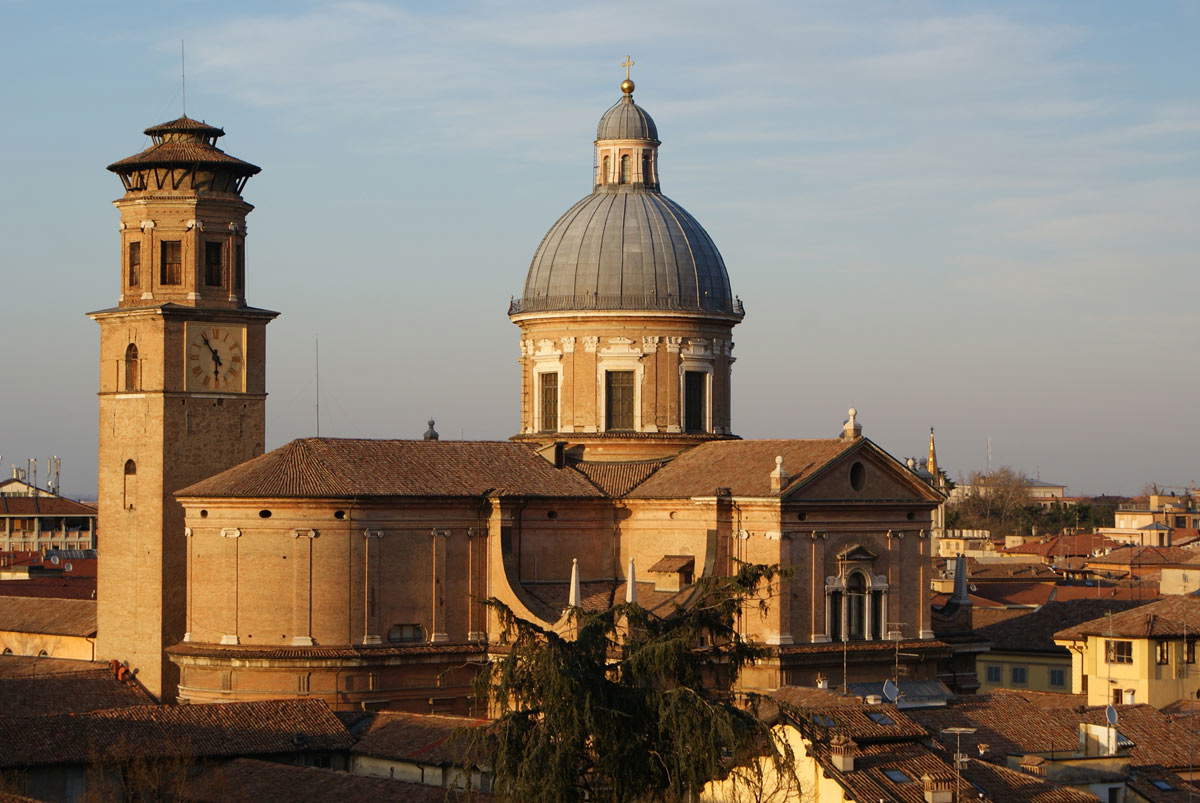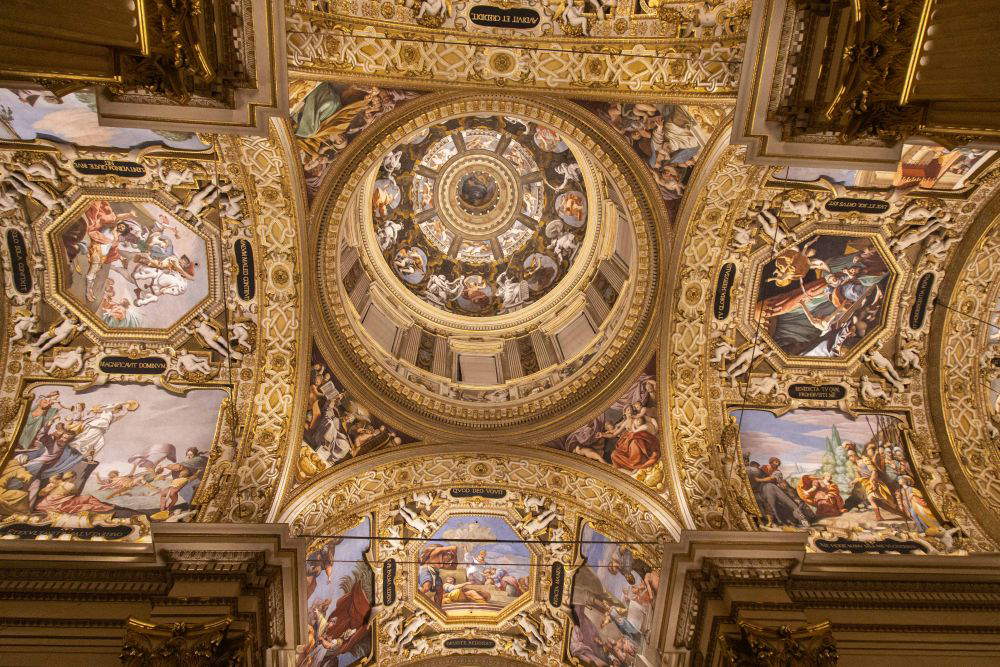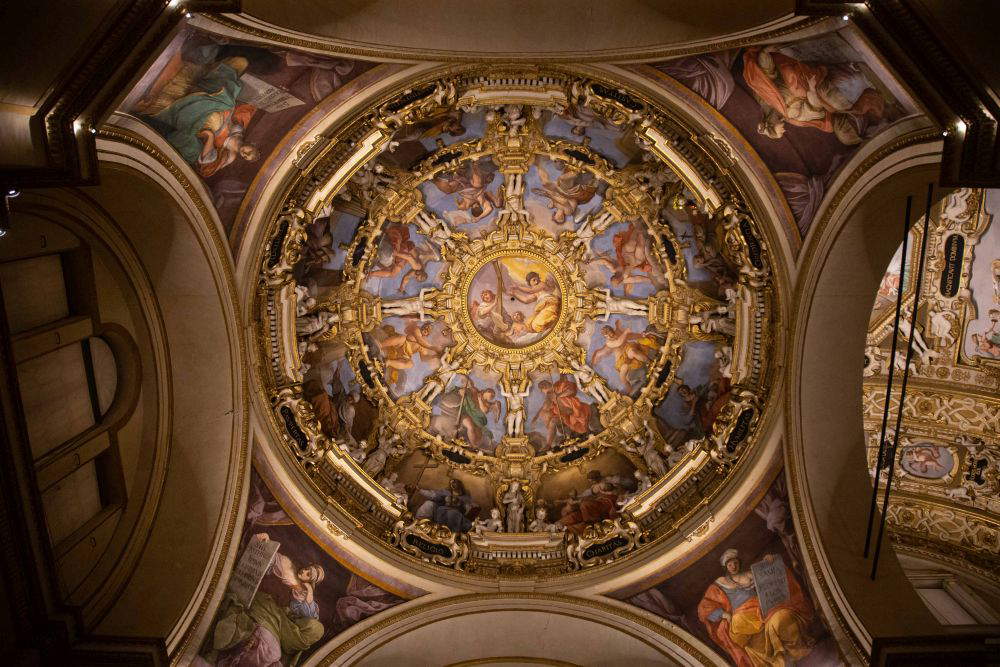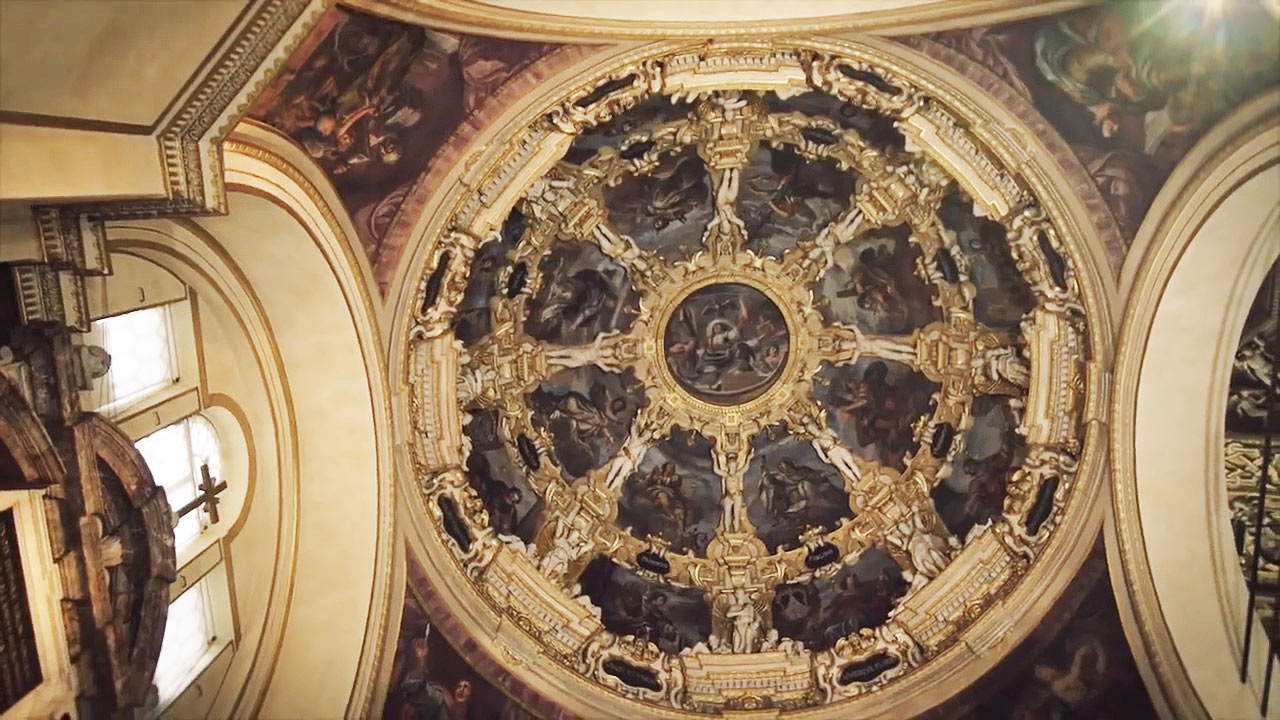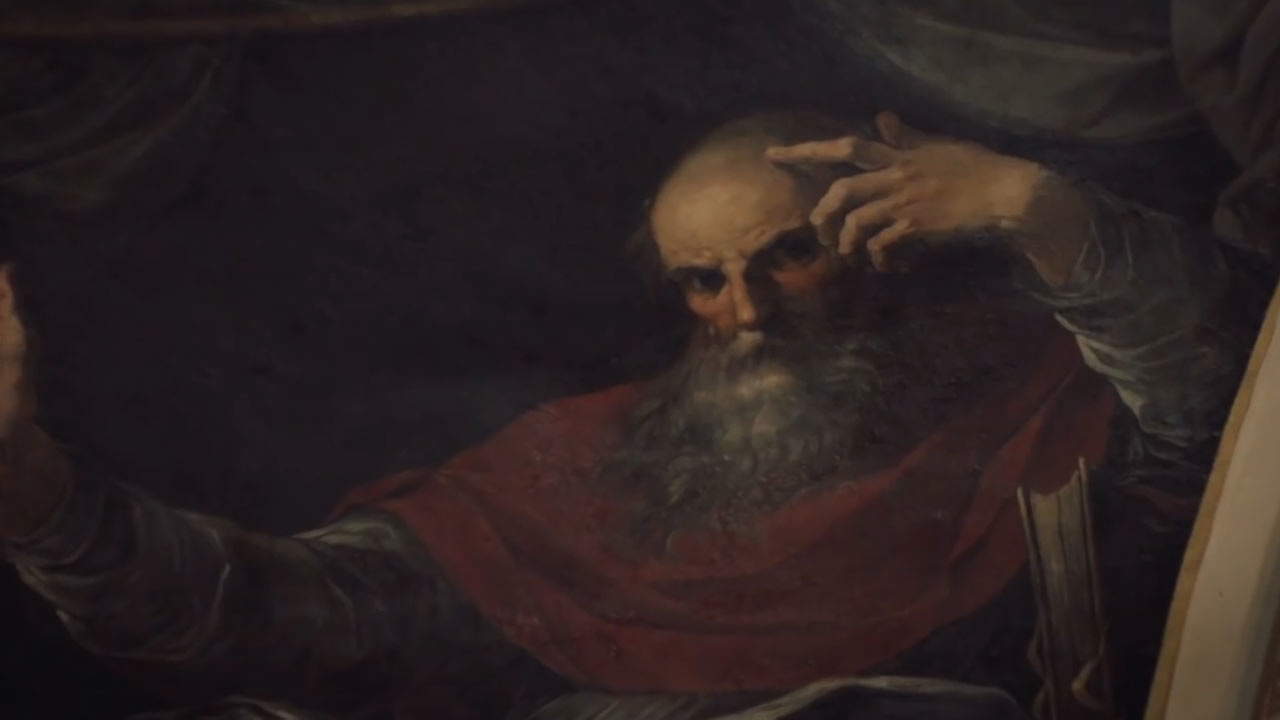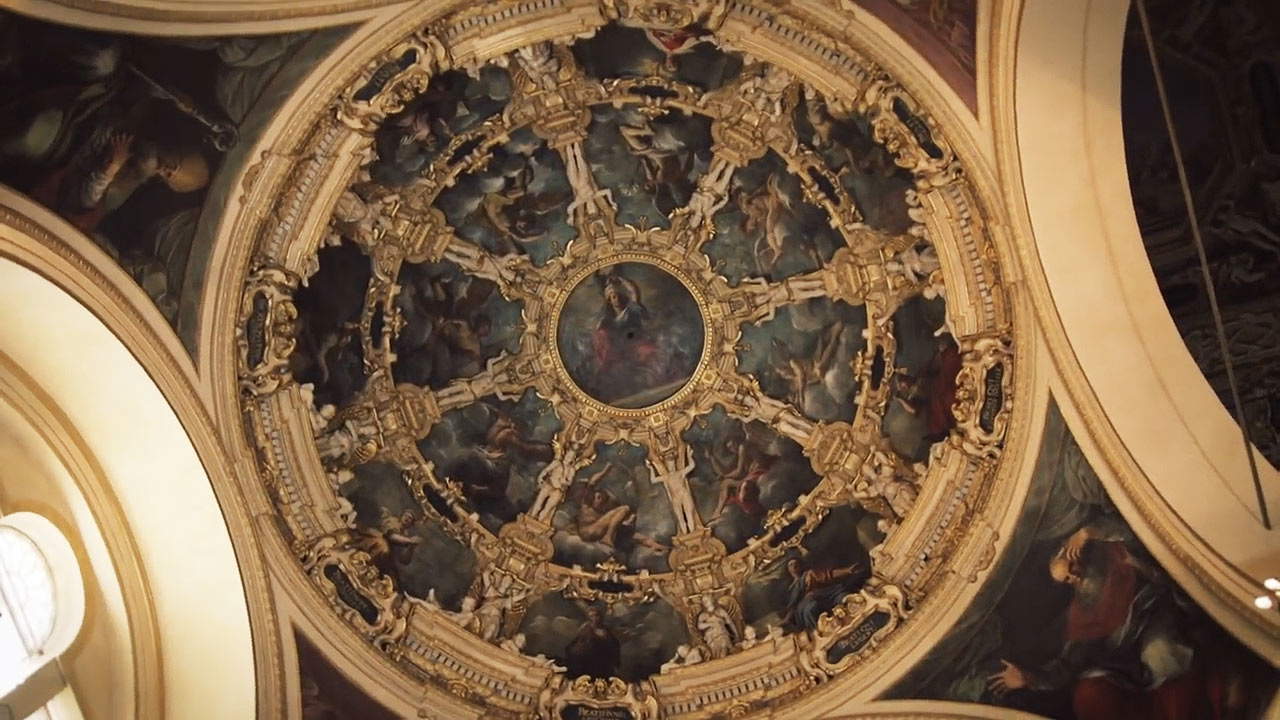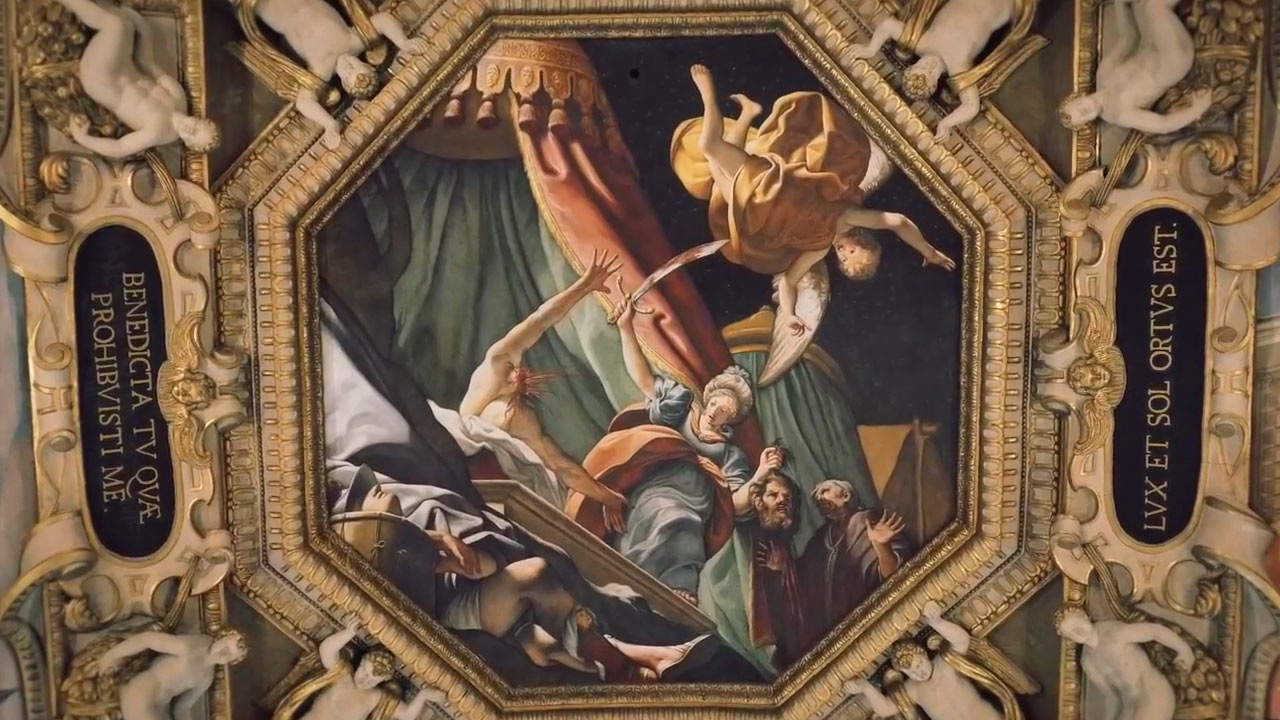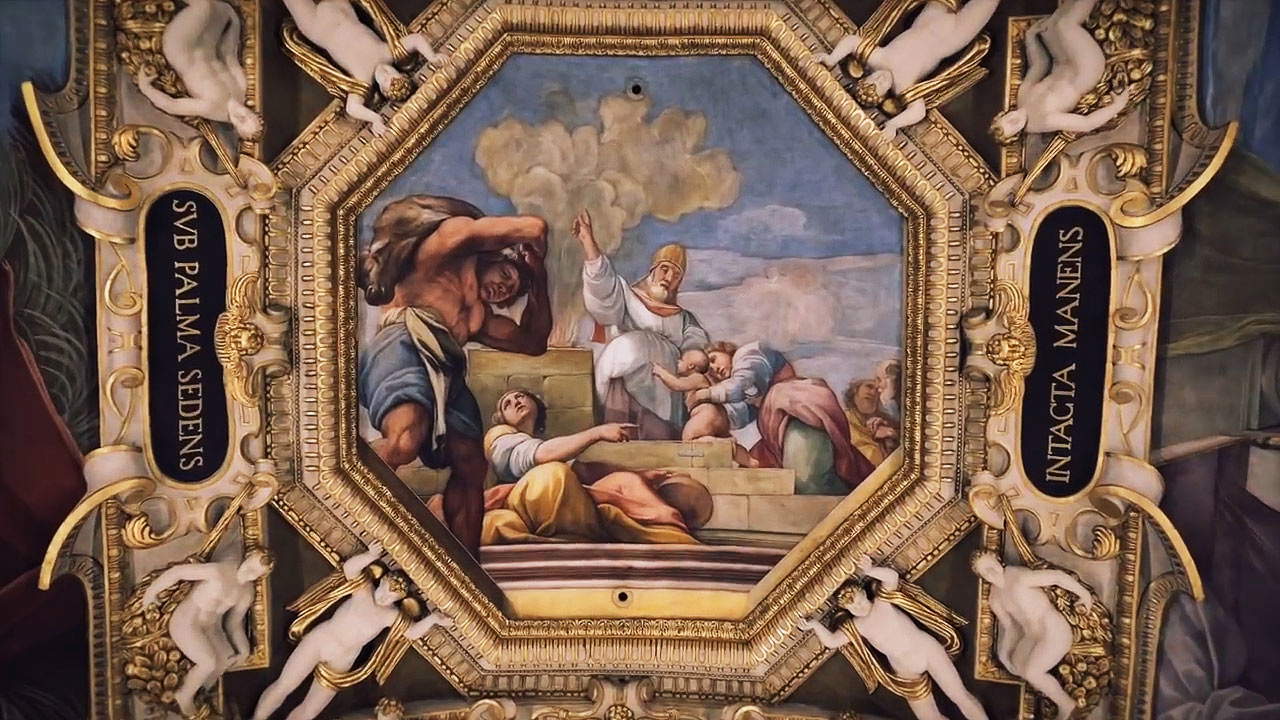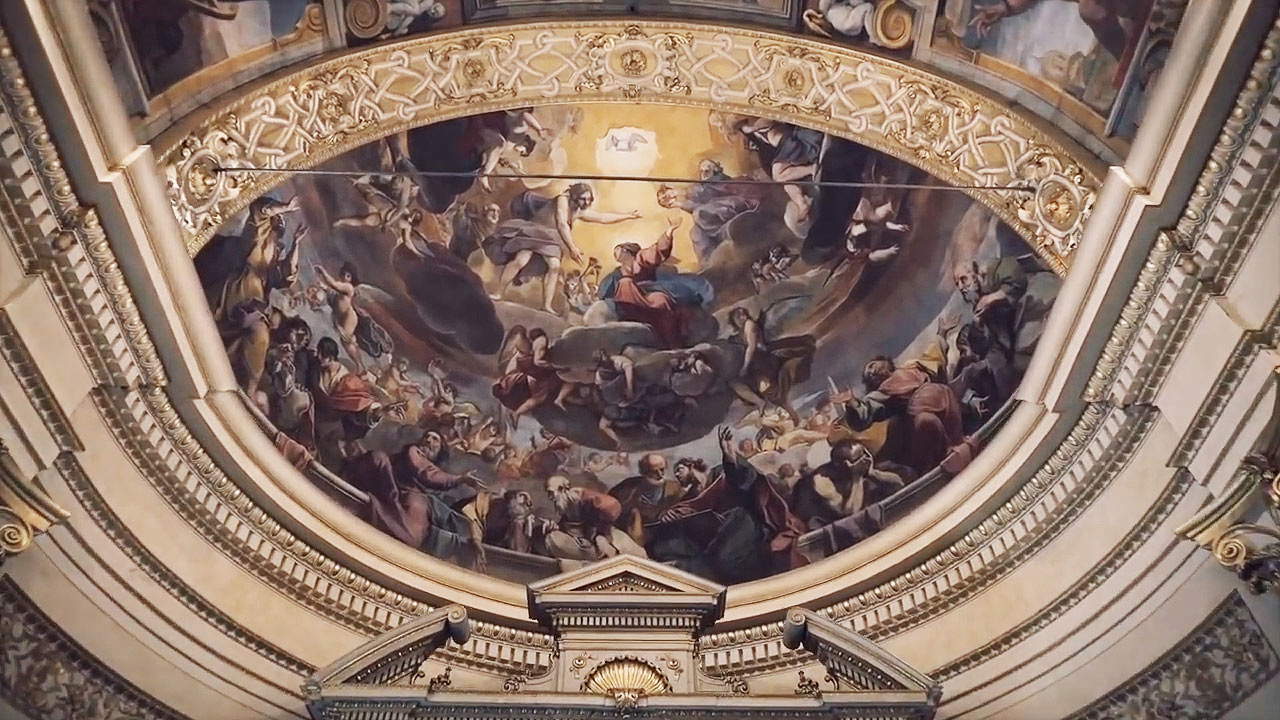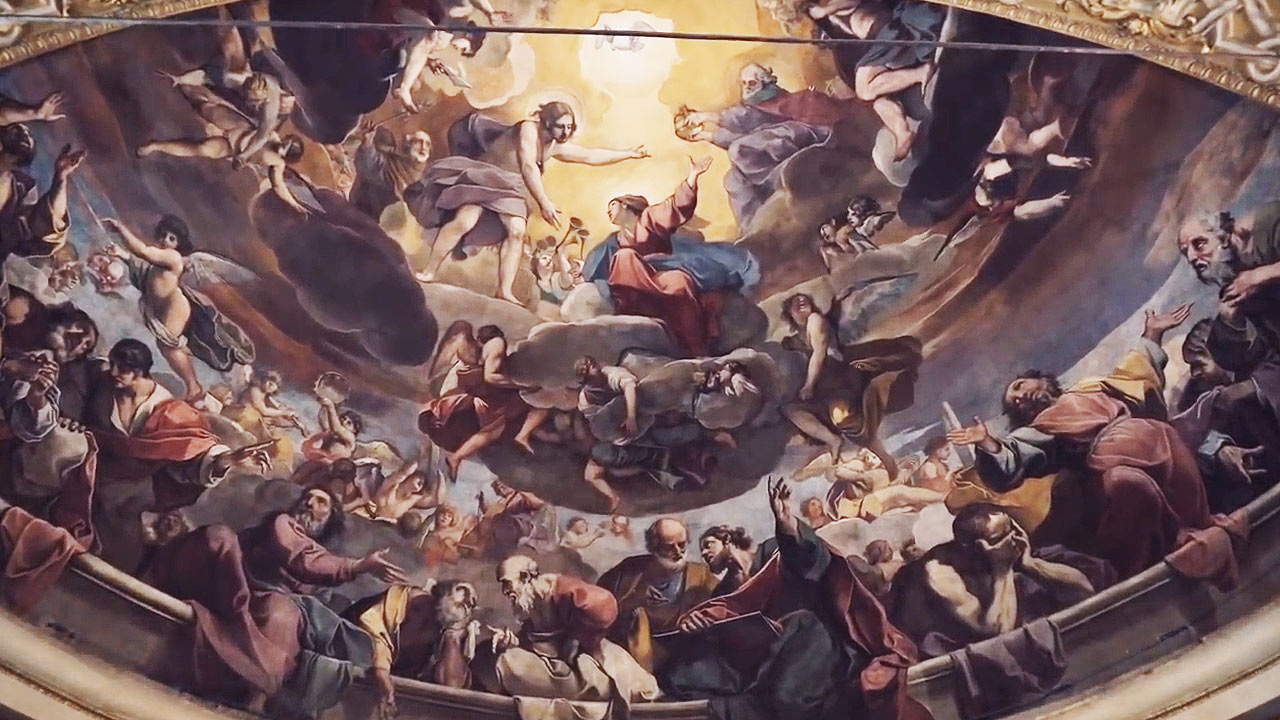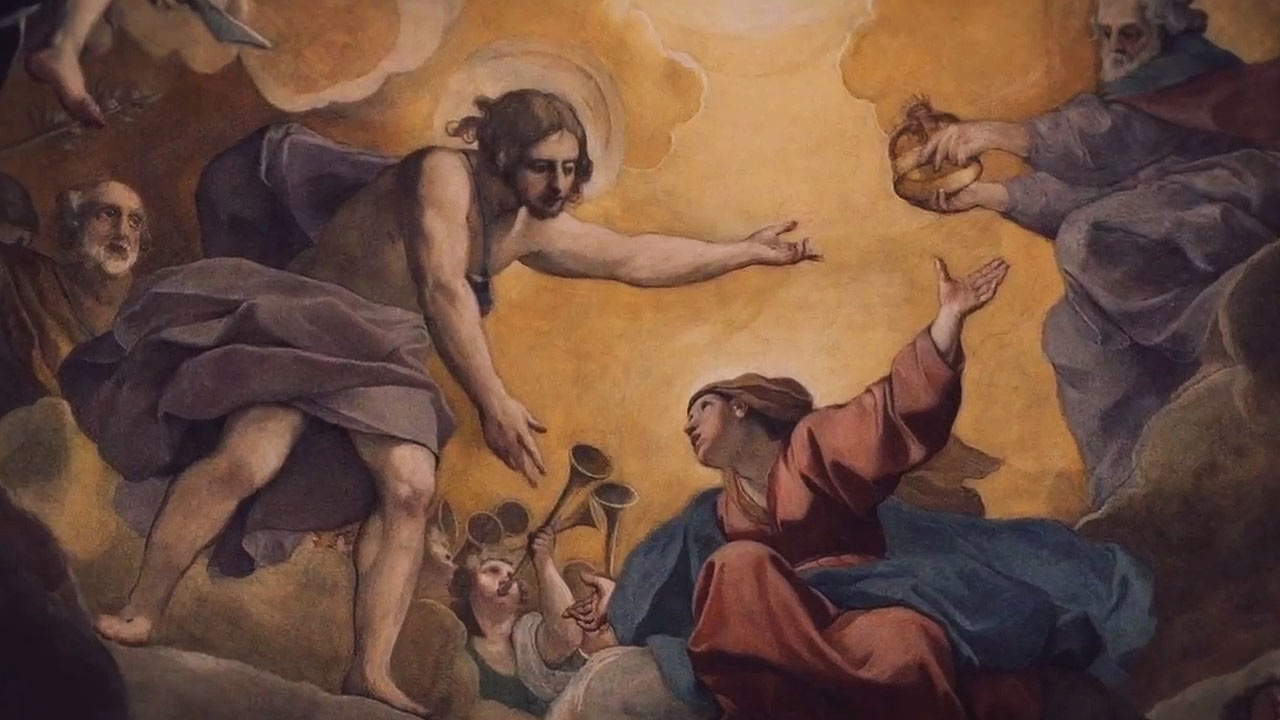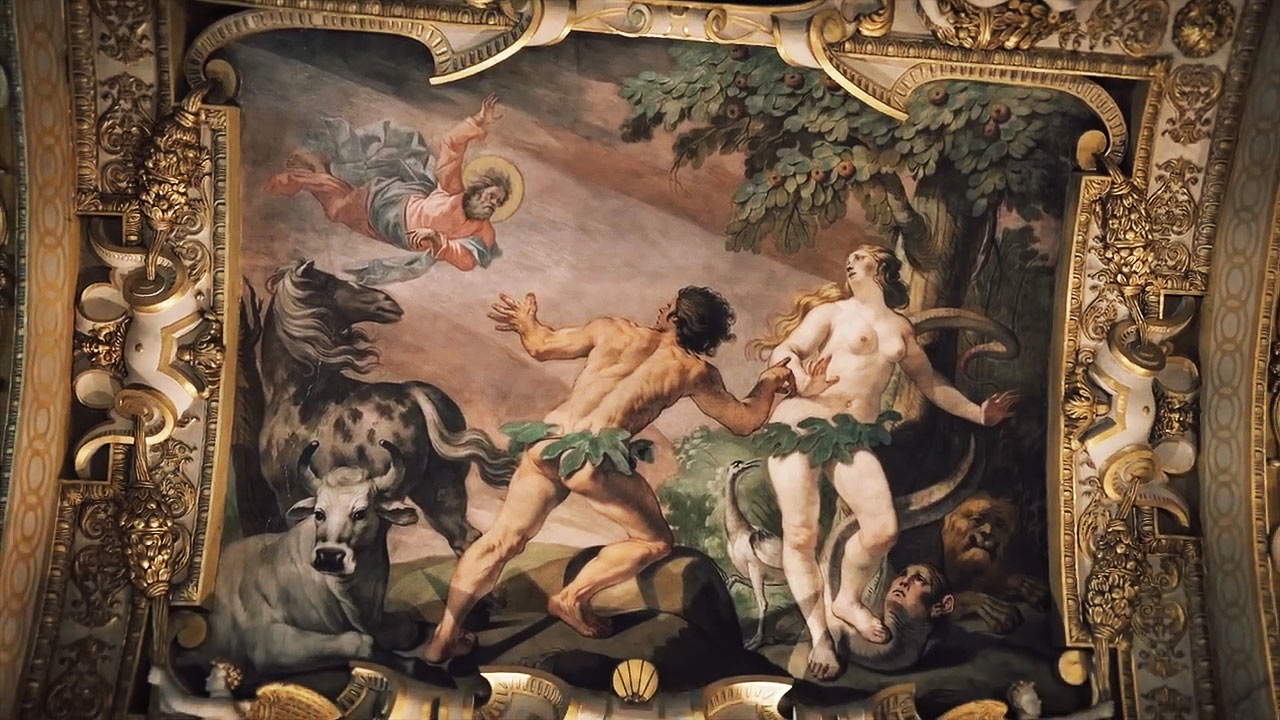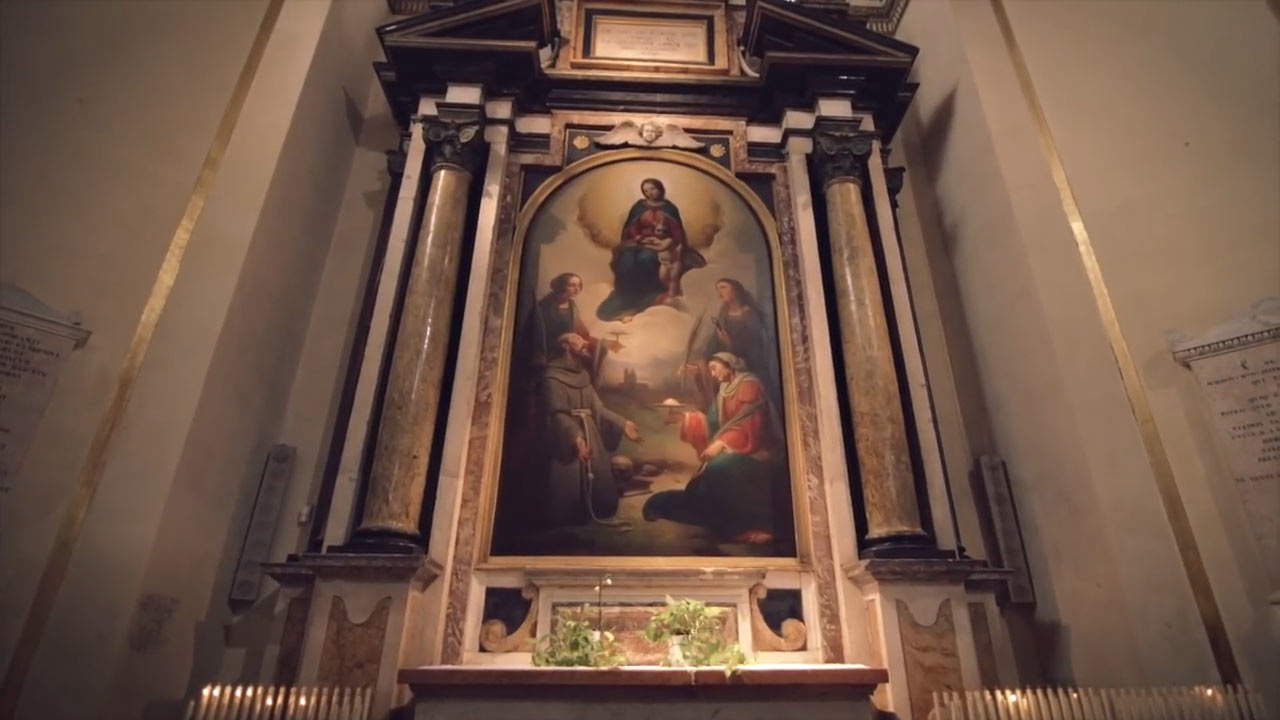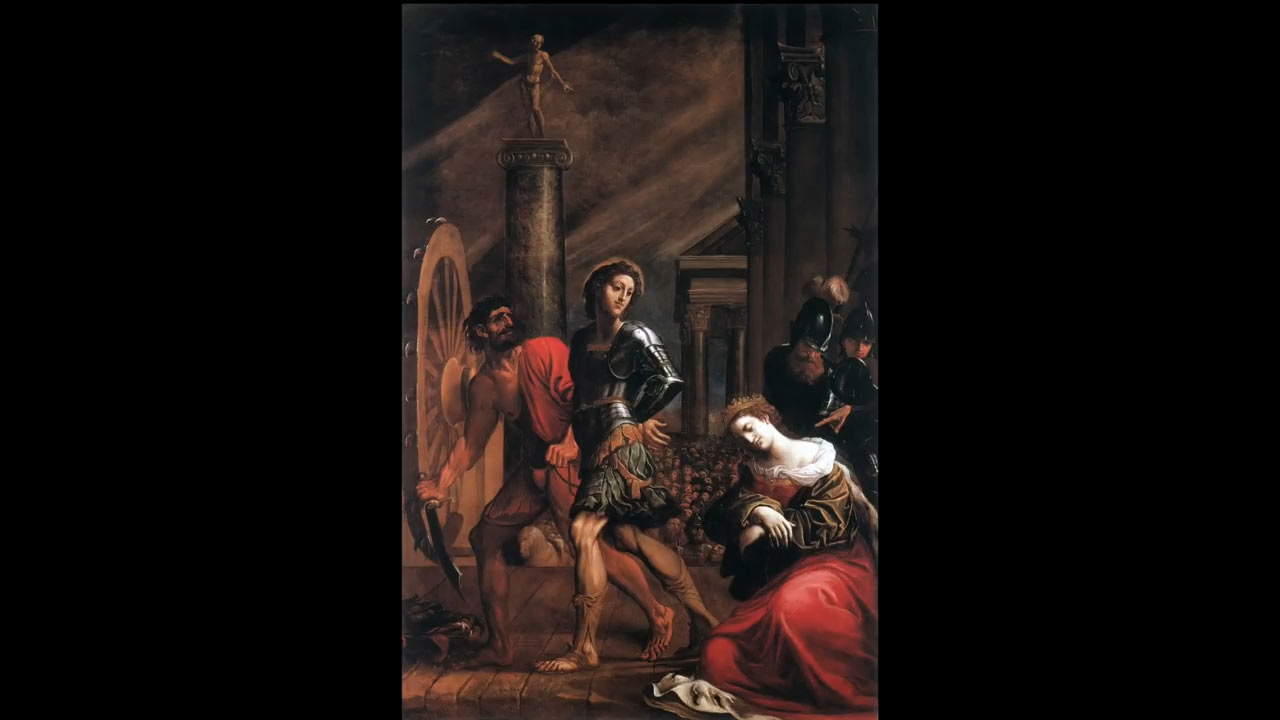by Federico Giannini, Ilaria Baratta , published on 28/12/2020
Categories: Works and artists
/ Disclaimer
On 1619, the faithful entered the temple of the Madonna della Ghiara in Reggio Emilia for the first time: an extraordinary building of worship, a summa of the great seventeenth century in Emilia, full of masterpieces.
It is May 4, 1596: the Duke of Ferrara, Alfonso II d’Este, receives a missive from Reggio Emilia, a report from the Council of Elders regarding a miraculous healing that occurred in the city a few days earlier, on April 29. “Most Serene Prince Signor et patrone mio colendissimo, It has seemed to us to agree with the debt of our devotion to Your Most Serene Highness,” the Anziani write, “signifying to you, as we do herewith, how by a miracle of Almighty God, et della gloriosissima Madre, to a giovaneto of fifteen years, the most vile, but the most notorious that was in the City, mutilated from his nativity, before the Most Holy Image of the Blessed Virgin placed on the cantonment of the convent of servants where he was staying for devotion, and vow of his own, was restored the tongue and in an instant the speech, and the cognition of names of all things.” The miraculous young man of fifteen is an orphan named Marchino, comes from Castelnovo ne’ Monti, is deaf-mute from birth, and by praying before the image of Our Lady at Cantone dei Servi had acquired sight and hearing.
The story of the miraculous fresco begins in 1517, when the community of the Servants of Mary of Reggio Emilia had built a church, dedicated to the Nativity of Jesus, along the Corso della Ghiara, one of the city’s most important streets, so called because here, until the early decades of the thirteenth century, was the bed of the Crostolo stream (the place name “Ghiara” recalls the “gravel” found along the watercourse), which in 1226 was diverted, and in time a road was built along the ancient bed that followed its course. The Servites had settled in the city in 1313, and as early as the Middle Ages they built a small temple here, later expanded, as mentioned, in 1517. In the same year the friars placed an image of Our Lady on the boundary wall of the convent’s vegetable garden, at an intersection known as the “Cantone dei Servi”: the work soon became an object of popular devotion, but it also began to deteriorate: so, in 1569, a citizen of Reggio, a certain Ludovico Pratissoli, in agreement with the community of the Servants, decided to commission one of the greatest Emilian painters of the time, Lelio Orsi (Novellara, 1511 - 1587), to remake the image. The sketch is not a faithful copy; it is a new image that is, however, approved by the servants, who commission a local painter, Giovanni Bianchi known as Bertone, to translate it into a fresco. It is a very simple image, suitable for veneration: it depicts Our Lady addressing Jesus with folded hands, as a sign of adoration. In the frame, a Latin inscription reads “Quem genuit adoravit” (“She adored the one she generated”). Bertone’s translation proposes a more serene and relaxed version than Orsi’s sketch, undoubtedly of far higher quality, but the faithful cared little: the popularity of the image was such that it became necessary to build a chapel in the garden of the friars in order to accommodate the ex votos left by the faithful passing by. And it is in front of this image that the miracle of 1596 takes place.
It is a prodigy whose news resonates throughout Reggio Emilia, reaches Ferrara and even reaches the papal court: in fact, the bishop, Claudio Rangone, summons a commission of theologians, doctors and jurists to examine what happened and, in the summer, in turn sends a report to Pope Clement VIII, who on July 22 approves the miracle, authorizing the cult of the Madonna della Ghiara. The officiality makes Reggio Emilia a pilgrimage destination, and subsequently a decision is made to build a new, large temple dedicated to the Madonna della Ghiara. The project is entrusted to an architect from Ferrara, Alessandro Balbo (Ferrara, c. 1530 - 1604), who imagines for the building a Greek-cross plan with one arm (the western one) larger in size, since the design includes an extension of the presbytery and choir, which brings the dimensions of the long side to sixty meters (the width reaches forty-five meters instead). The first stone of the building is laid on June 6, 1597: present at the ceremony are Duke Alfoso II d’Este, Duchess Margherita Gonzaga, and Bishop Claudio Rangone. The work was completed in 1619: a very well attended procession organized on May 12, splendid and complete with ox-drawn allegorical floats, celebrated the consecration and the transfer of the miraculous image of the Madonna to the altar of the northern arm, where it still stands today.
 |
| Lelio Orsi, Madonna of the Ghiara (1569; pen, ink, brown watercolor, white lead highlights on dyed paper applied to canvas and pasted on board, 235 x 220 mm; Reggio Emilia, Museum of the Madonna of the Ghiara) |
 |
| The image considered miraculous, by Bertone |
 |
| The basilica of the Madonna della Ghiara in Reggio Emilia. Ph. Credit Finestre Sull’Arte |
 |
| The basilica of the Madonna della Ghiara with the porticoes of the cloisters. Ph. Credit |
 |
| The basilica of the Madonna della Ghiara in Reggio Emilia. Ph. Credit Paolo Picciati |
 |
| The interior of the dome |
The people of Reggio had before them a large and imposing building, over which towered the dome designed by Cosimo Paglioni and Francesco Pacchioni (the latter, named Balbo’s continuator, was responsible for the structure’s somewhat troubled elevation: in 1605 the architect was also forced to demolish the dome and redo it because of structural problems): an elegant and sober brick façade, tripartite, with a high tympanum supported by four pilasters and two volutes on which soar the white pinnacles, typical of the language of one of the greatest Emilian architects of the time, Jacopo Barozzi known as the Vignola, with whom Balbo had trained (the entire façade, moreover, shows markedly Vignolesque stylistic features).
At the date of the inauguration, however, the temple of the Ghiara was still largely bare, and work on the interior was still in full swing: the only decorations that can be admired there are the frescoes of the dome, those of the presbytery and those of the altar of the Madonna della Ghiara. These are, however, works of great significance: Lionello Spada (Bologna, 1576 - Parma, 1622) was called to paint the dome, and he worked there from 1614 to 1616 on the quadratures made by Tommaso Sandrini from Brescia (Brescia, 1580 - 1635), and again Lionello Spada was in charge of the frescoes on the vault of the northern arm, while those of the presbytery were executed in 1618 by another great painter from Emilia, Alessandro Tiarini (Bologna, 1577 - 1668). Although the decorative cycles are not yet ready (they will take thirty years to reach completion), the Fabbriceria della Beata Vergine della Ghiara is well aware of the themes of the iconographic program: an exaltation of Mary as bride, mother and Virgin, as queen of heaven and mediatrix between men and God, announced by the prophets, described in the accounts of the evangelists and then preached by the saints and doctors of the Church. Work, however, went on and, between 1625 and 1629, Tiarini again completed the decoration of the choir vault and that of the apse basin, where we admire a sumptuous and magnificent scene of theAssumption of the Virgin. The plague disaster of 1630, which also seriously affected Reggio Emilia, interrupted the work for ten years, when the frescoes of the entrance arm and those of the eastern arm were still missing: the decorations of the entrance arm were completed by Luca Ferrari (Reggio Emilia, 1605 - Padua, 1654), a pupil of Tiarini, between 1644 and 1646, and since the Fabbriceria was satisfied with the result, Ferrari was also commissioned in 1646 to paint the remaining frescoes of the east vault, completed in 1648.
The iconographic reading can start from the small domes that rise above the side chapels, and which are frescoed in the same turn of the year: it is a narrative of the history of the world through the figures who announced the coming of the Virgin(sibyls and prophets), who told her life(the evangelists) and who preached her(the doctors of the church). The first dome to be completed was, in 1619, that of the sibyls, which was the responsibility of Tiarini: his work was appreciated to the point that it earned him the commission for theAssumption scene in the apse basin. The sibyls are painted in foreshortening, appearing powerful and graceful at the same time (simply “beautiful” according to Carlo Cesare Malvasia, who so describes them in his Felsina pittrice), to the point of thinking that Tiarini retains some memory of Michelangelo that came to him in all likelihood through Parmigianino and reworked in a scenographic key (see how the sibyls lean out and seem almost to converge toward the observer, like the angels above them). The small dome of prophets, on the other hand, is frescoed in 1630 by Camillo Gavassetti (Modena, 1596 - Parma, 1630), who left the last work of his career in the Basilica della Ghiara, while the evangelists are painted in 1642 by Pietro Desani (Bologna, 1595 - Reggio Emilia, 1647): the latter is considered to be the lowest quality dome, inferior even to other works by Desani (it is thought that the artist worked with more haste than necessary). The Doctors of the Church, which occupy the pendentives of the small dome of the Gobbi chapel, are instead one of the masterpieces of the maturity of Carlo Bononi (Ferrara, c. 1580 - 1632), who executed them with the unusual technique ofoil on plaster a few years after his hypothetical trip to Rome (not known from the documents but hypothesized on the basis of the strong changes in his style assumed towards the end of the 1910s), leaving in Reggio Emilia one of the first evidences of Caravaggism in the city: the Doctors of the Church, precisely, whose profiles so stark and realistic, emphasized by the intense luministic sensibility of the Ferrara artist, bring to mind the Roman art of the time (observe for example the imperious figure of Saint Jerome).
One of the most unique features of the decorative apparatuses of the Basilica della Ghiara consists in the fact that the stories depicted in the vaults are not dedicated to the life of Mary, but are tales of episodes from the Old Testament that narrate exploits of heroines capable of embodying all the virtues that would later characterize the Madonna: thus, a kind of great female Bible that heralds the coming of the mother of Christ by recounting her virtues and becoming allegories of her saving role, since they are mostly heroines who save their people. Among the episodes that the faithful can see upon entering the basilica for the first time in 1619 is Judith Beheading Holofernes, a work by Lionello Spada that occupies the octagon of the arm culminating with the altar of Our Lady of the Ghiara: an extraordinary nocturne also with a Caravaggesque flavor, truculent because of the detail of the bloody scimitar and the blood spurting from the decapitated neck of Holofernes, but also highly effective by virtue of the bold diagonal perspective foreshortening. It is a foreshortening that we also find in the scene of Esther and Ahasuerus, which we see alongside the central octagon: of strong impact is the illusionistic depiction of the staircase that seems almost to spill out of the painting and make itself known to the relative. On the vault of the chancel, Tiarini depicts instead, also in time for the inaugural procession, the scene with Anna entrusting her infant son Samuel to the priest, flanked by those with Abisag serving old King David and with Deborah summoning Barac, ordering him to summon an army of ten thousand soldiers to free the Jewish people from the Canaanites. These are the panes with which Tiarini shows off by succeeding in being commissioned for the missing scenes, with which he in turn knows how to surpass himself, especially with the St. Michael defeating the devil (note the illusionistic depiction of Lucifer, hurled downward: he seems to be flying toward us, realistically, thanks to the very skillful balancing of light and shadow and the positioning of the figure in relation to the quadratures). In contrast, the large fresco in the apsidal basin, anAssumption of the Virgin, a traditional subject revisited in a neo-Corregian key, has attracted mixed judgments, precisely because of its adherence to the Parma model, with the characters arranged in concentric bands that culminate in the encounter between Christ and Mary and begin with the figures of the apostles, arranged along the cornice of the basin and caught in their reactions of strong and evident astonishment and dismay before the miracle they are witnessing. Ferrari’s bright and vivid paintings bring the faithful back to the dome: in the lantern, they witness the apotheosis of the Virgin painted in 1619 by Lionello Spada, flanked by figures of characters from the Old Testament who appear in the spaces of the dome and by the saints of the order of the Servants and the patron saints of Reggio Emilia frescoed along the drum.
 |
| The dome of the Sibyls by Alessandro Tiarini (1619). Ph. Credit Fabbriceria Laica of the Temple of the B. V. della Ghiara |
 |
| The small dome of the prophets by Camillo Gavassetti (1630). Ph. Credit Fabbriceria Laica of the Temple of the B. V. della Ghiara |
 |
| The small dome of the evangelists by Pietro Desani (1642). Ph. Credit Fabbriceria Laica del Tempio della B. V. della Ghiara |
 |
| Detail of the Saint Jerome by Carlo Bononi. Ph. Credit Fabbriceria Laica del Tempio della B. V. della Ghiara |
 |
| The small dome of the Doctors of the Church by Carlo Bononi (1622). Ph. Credit Fabbriceria Laica del Tempio della B. V. della Ghiara |
 |
| Lionello Spada, Judith and Holofernes (1619). Ph. Credit Fabbriceria Laica del Tempio della B. V. della Ghiara |
 |
| Lionello Spada, Esther and Ahasuerus (1619). Ph. Credit Fabbriceria Laica of the Temple of the B. V. della Ghiara |
 |
| Alessandro Tiarini, Anna entrusts her infant son Samuel to the priest (1619). Ph. Credit Fabbriceria Laica of the Temple of the B. V. della Ghiara |
 |
| Alessandro Tiarini, Abigail and David (1619). Ph. Credit Fabbriceria Laica of the Temple of the B. V. della Ghiara |
 |
| Alessandro Tiarini, Saint Michael (1624). Ph. Credit Fabbriceria Laica del Tempio della B. V. della Ghiara |
 |
| The apse basin frescoed by Alessandro Tiarini (1624). Ph. Credit Fabbriceria Laica del Tempio della B. V. della Ghiara |
 |
| The apse basin frescoed by Alessandro Tiarini (1624). Ph. Credit Fabbriceria Laica del Tempio della B. V. della Ghiara |
 |
| The apse basin frescoed by Alessandro Tiarini (1624). Ph. Credit Fabbriceria Laica del Tempio della B. V. della Ghiara |
 |
| Luca Ferrari, Adam and Eve (1644). Ph. Credit Fabbriceria Laica del Tempio della B. V. della Ghiara |
 |
| The dome frescoed by Lionello Spada (1619). Ph. Credit Fabbriceria Laica of the Temple of the B. V. della Ghiara |
The decorations adorning the walls are not the only relevant works in the Basilica of the Ghiara: soon the altars also began to be filled with altarpieces painted by the greatest Emilian masters of the time. The faithful, entering the temple on opening day, could admire, in the Gabbi chapel, the Martyrdom of Saints George and Catherine of Alexandria, a devout and theatrical work by Ludovico Carracci (Bologna, 1555 - 1619) delivered in 1618, and, in the first chapel on the left, that is, the Brami chapel (or Monte di Pietà chapel, named after the later owners), Lionello Spada’s Vision of St. Francis , a work financed (as was the entire decoration of the chapel) by the Reggio Emilia countess Camilla Ruggeri Brami: the painting was stolen, however, in 1783 (it was later recovered: today it is in the Galleria Estense in Modena), and was replaced with a painting by Giuseppe Romani of Como, which was in turn changed, in 1854, with a Madonna and Child with Saints Francis of Assisi, Lucy, Apollonia and Agatha by Alfonso Chierici (Reggio Emilia, 1816 - Rome, 1873), a work of clear neo-Raphaelesque flavor.
The best-known painting, however, is the Crucifixion by Guercino (Giovanni Francesco Barbieri; Cento, 1591 - Bologna, 1666), a work intended for the altar of the Municipality of Reggio Emilia, designed by Parma architect Giovanni Battista Magnani. The Municipality initially approached Guido Reni, but he set conditions deemed unacceptable by the Reggio Emilia community, so they opted for the great Cento artist, young but already famous, who delivered his work in 1624. It is a Crucifixion that amazes and astounds his contemporaries: Guercino sets it in a gloomy landscape, and it is the darting light that brings out the forms of the protagonists (the memory of his recent stay in Rome is still vivid), arranged around the crucified Christ, in a composition with a solemn character that does not forget the lesson of Guido Reni, and that makes use of the scenographic presence of Saint Prospero, the patron saint of Reggio Emilia, who implores protection for the city. For art historian Denis Mahon, Guercino’s greatest scholar, it is one of the works that mark the beginning of a new phase in the artist’s career, characterized by an’openness to Roman painting of the time (notably that of Caravaggio), which enriched his already considerable cultural background, resulting in works where the natural is balanced with the need for idealization and simplification well described by Mahon himself. And it is a work that has a considerable impact in the city, so much so that the municipality decides to reward Guercino by giving him a gold necklace and a gold medal bearing the image of the Madonna della Ghiara.
 |
| Alfonso Chierici, Madonna and Child with Saints Francis of Assisi, Lucy, Apollonia and Agatha (1854) |
 |
| Ludovico Carracci, Martyrdom of Saints George and Catherine of Alexandria (1618) |
 |
| Guercino, Crucifixion (1624) |
In terms of variety, unity (today we see the basilica of the Ghiara, minus a few exceptions and a few later additions, as the faithful who entered it in the 17th century saw it), state of preservation, the basilica of the Ghiara in Reggio Emilia is one of the great temples of seventeenth-century art in Emilia, as well as one of the most important building sites of its time, since its construction and decoration saw the participation of some of the most distinguished Emilian artists of the time: practically only Guido Reni was missing from the roll call. And to think that the basilica had come close twice to having one of his paintings: some documents recently unearthed in theState Archives of Reggio Emilia revealed that, in the 1930s, the Monte di Pietà attempted to purchase a work by Guido Reni to be destined for the chapel whose patronage it held, as a replacement for Lionello Spada’s Vision of Saint Francis . The negotiations went through and Guido Reni set to work, but the execution of the painting took a very long time, and by the date of the Bolognese master’s death in 1642, the painting was still little more than a sketch and the Monte di Pietà decided not to collect it. Instead, it was purchased by Count Marco Antonio Hercolani for his own private collection, who was very fond of Guido Reni’s unfinished paintings: today it is instead in the Pinacoteca Nazionale in Bologna.
The wall from which the whole story began no longer exists: the miraculous image, as we have seen, is now displayed on the altar of the northern arm, while Lelio Orsi’s drawing is kept in the adjoining Museum of the Sanctuary of the Blessed Virgin of the Ghiara, opened in 1982 in some rooms of the Servite convent: inside, liturgical objects and offerings make up the Basilica’s Treasury and tell the story of a cult that has lasted for five centuries. A story, of course, that is not yet finished: the new lighting system for the interior of the temple was inaugurated on September 4, 2019, an event with which the fourth centenary of the translation of the image of the Madonna della Ghiara was celebrated. A Led lighting apparatus, designed by Giancarlo Grassi, Daniele Canuti and Gian Paolo Roscio, which renews the one from 1997, which was realized thanks to the contribution of Iren spa, and which was aimed precisely at making the frescoes stand out, allows a tighter control over the color, regulation and variations in theintensity of light, designed to enhance the scenographic effects of the fresco decoration, to reduce glare and visual interference, and to enhance the architecture, which in accordance with seventeenth-century aesthetics cannot be considered a separate element from the paintings. A new chapter in a history more than four hundred years long.
Warning: the translation into English of the original Italian article was created using automatic tools.
We undertake to review all articles, but we do not guarantee the total absence of inaccuracies in the translation due to the program. You can
find the original by clicking on the ITA button. If you find any mistake,please contact us.
